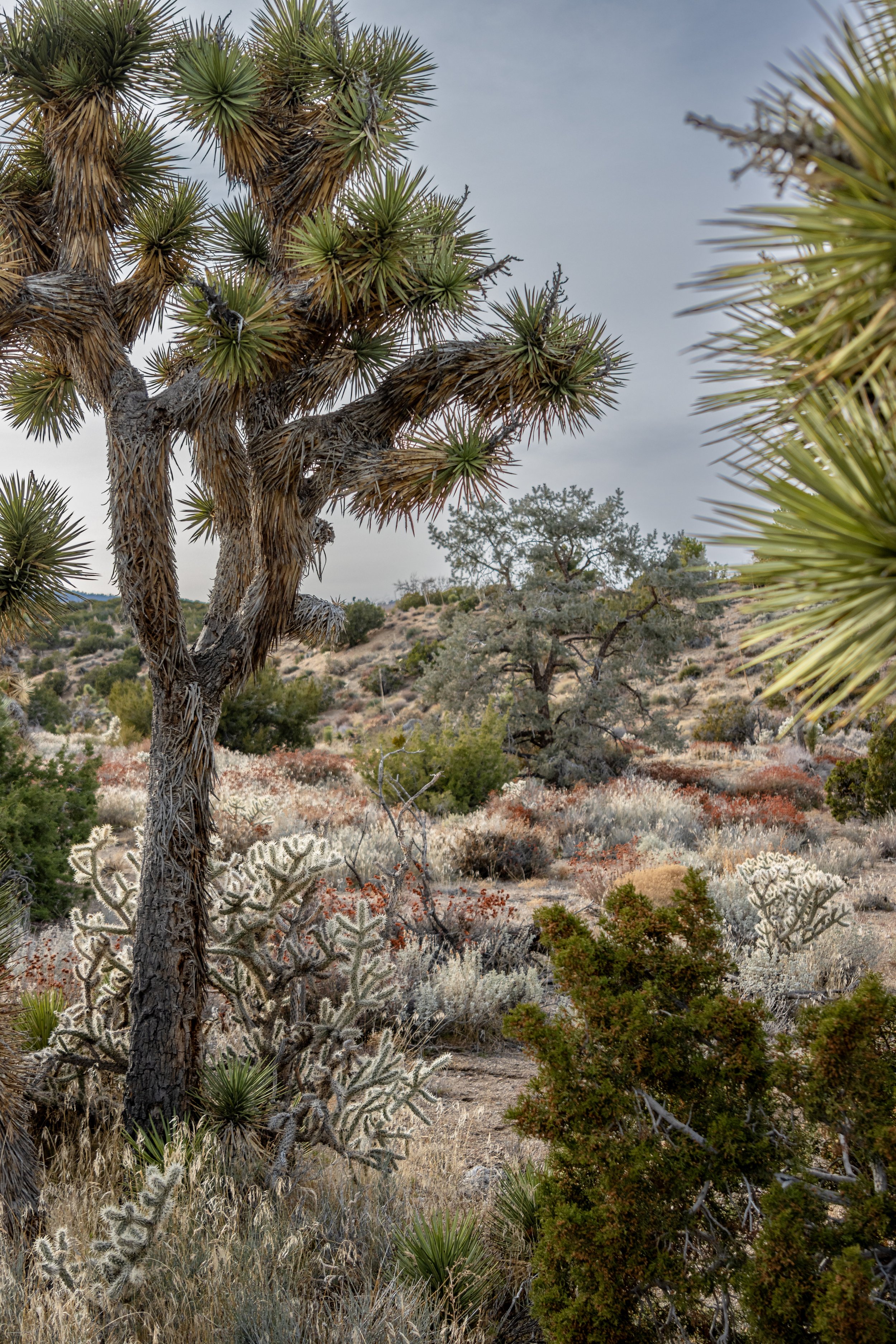
PUMA CANYON ECOLOGICAL RESERVE
The Puma Canyon Ecological Reserve (PCER) consists of over 350 acres in Pinon Hills, which is located just north of Wrightwood, California. This is where Transition Habitat Conservancy first began. We have opened the Reserve to the public and it is enjoyed by hikers and horseback riders alike. This project area represents an opportunity to protect lands where five California Habitat Relationship Systems come together and blend. These communities include; Pinyon-Juniper, Joshua Tree, Desert Wash, Desert Scrub, and Mixed Chaparral (a threatened plant community type). The Reserve is home to abundant and dense woodlands of the state candidate species, the Western Joshua tree. This project represents an opportunity to protect an outstanding occurrence of this at-risk vegetative community in a location that:
Conserves a key recharge area for the Mojave River Watershed, at the headwaters tributary to upper Sheep Creek Wash where most of the infiltrate occurs into the aquifer; Has strong community support, with local partners willing to assume responsibility for fee title ownership, and conservation easement monitoring; and will be used for environmental and conservation education.
About Puma Canyon Ecological Reserve
Reserve Activities
-

Hiking
-

Equestrian
-

Birding
-

Photography
-

Wildflower Viewing
-
Picnicking
The Plants and Animals of Puma Canyon
-
49 species of birds have been recorded in Puma Canyon. The area provides an important climate gradient for both mountain and desert species, as well as migrating species.
-
The Reserve has high biological diversity and biological value and contains the unique blend of vegetative communities that only occurs at the transition zone of two distinct ecoregions: the Mojave Desert and the California South Coast. The California Wildlife Habitat Relationships System (CWHR) habitats Pinyon Juniper and Western Joshua Tree dominate and mix within the area. This mixture of these two habitats only occurs on the desert slopes of the transverse ranges and provides important habitat to many wildlife species. Additional CWHR plant communities occur including Desert Wash, Desert Scrub, and Mixed Chaparral. These habitats may support rare, declining, or endemic species.
The state candidate species, the Western Joshua tree is extremely dense here, and we are investigating the elevational climate gradient potential of the Reserve for additional refugia for this species.
-
One purpose of the Reserve is to protect the corridors from the Mojave Desert to the Angeles National Forest at the intersection of two distinct ecoregions. Our conservation principles also include connecting elevational gradients, recognizing that protection of connectivity across a range of elevations may allow plants and animals to migrate and adapt based on changes in climate and precipitation, and to seasonal conditions. Many mammal species have been observed, either through direct observation or diagnostic sign, within Puma Canyon Ecological Reserve.
desert cottontail (Sylvilagus audubonii)
black-tailed jackrabbit (Lepus californicus)
California ground squirrel (Spermophilus beecheyi)
Botta’s pocket gopher (Thomomys bottae)
bobcat (Lynx rufus)
mule deer (Odocoileus hemionus).
coyote (Canis latrans),
desert woodrat (Neotoma lepida)
gray fox (Urocyon cinereoargenteus)
raccoon (Procyon lotor)
-
11 reptile species have been observed within the Puma Canyon Ecological Reserve.
-
130 species of insects have been observed and identified in Puma Canyon, including the monarch butterfly. Puma Canyon lies within a Priority #1 Early Breeding Zone for monarchs. We have native milkweed (Asclepias vestita) that grows throughout the Reserve, and have been awarded a NFWF federal grant in order to improve this habitat for monarchs.
Hiking In Puma Canyon
Hiking and Usage Tips
Bring lots of water. There is no supplemental water onsite.
Bring snacks if possible.
Check the weather in advance.
Bring a hat and other appropriate clothing such as a jacket or other layers.
Wear shoes comfortable enough to provide support.
Bring dog-poop bags and more water if you are bringing your pup.
Wear sunscreen.
Watch out for the "pokey" plants on the trails, such as: Cholla, Joshua tree and Yucca. Cholla is very spiny and can get caught in dogs’ paws and hikers’ shoes. Do not attempt to remove it by hand. Use a small pair of pliers or a comb to remove it. It has velcro-like tendencies.
Keep an eye out for the wildlife that calls this place home. Rattlesnakes, coyotes, and bobcats are a few of our very rarely- seen residents. If you give them space they will be happy to keep away from you. Enjoy the sighting if you do spot them.
There is 1 restroom facility (porta-potty) near the Roberta Dewey Discovery Center near Wintergreen Rd. but it is not always available!
There are no trash cans on site, so be prepared to take out any trash you bring in.
No fires, drone usage, shooting, hunting, motorized vehicles, bikes, camping, or collecting of any plants, animals or other materials in the Reserve.
For helpful tips on how to be responsible outdoors, click on these link logos provided.



